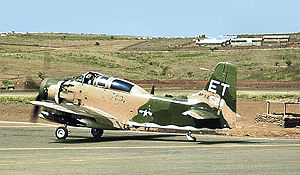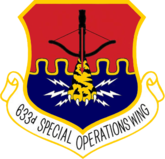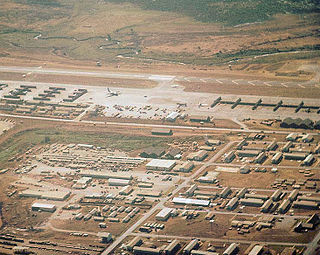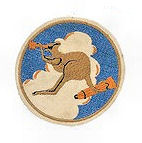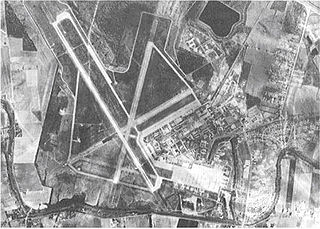
The 504th Bombardment Group was a World War II United States Army Air Forces combat organization. It was inactivated on 15 June 1946.
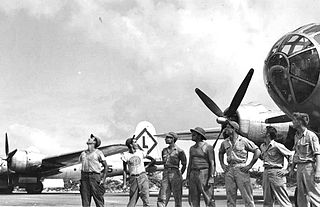
The 331st Bombardment Group is an inactive United States Air Force unit. It was last assigned to the 315th Bombardment Wing, being stationed at Northwest Field, Guam. It was inactivated on 15 April 1946.
The 346th Bombardment Group is an inactive United States Air Force unit. It was last assigned to the 316th Bombardment Wing, being stationed at Kadena Airfield, Okinawa. It was inactivated on 30 June 1946.
The 382d Bombardment Group is an inactive United States Air Force unit. It was last assigned to the Army Service Forces, being stationed at Camp Azna, California. It was inactivated on 4 January 1946.
The 383d Bombardment Group is an inactive United States Air Force unit. It was last assigned to the Army Service Forces, being stationed at Camp Azna, California. It was inactivated on 3 January 1946.
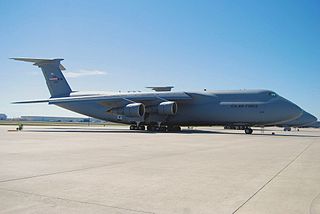
The 356th Airlift Squadron is a United States Air Force Reserve squadron, assigned to the 433d Operations Group, stationed at Kelly Field Annex, Joint Base San Antonio, Texas.

The 15th Special Operations Squadron is part of the 1st Special Operations Wing at Hurlburt Field, Florida. It operates Lockheed MC-130H Combat Talon II aircraft in support of special operations.
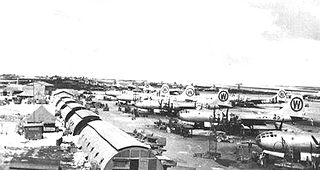
The 505th Bombardment Group is an inactive United States Air Force unit. Its last assignment was with Thirteenth Air Force, stationed at Clark Field, Philippines. It was inactivated on 30 June 1946.

The United States Air Force's 633rd Air Base Wing is the host organization for Joint Base Langley-Eustis, Virginia. Its headquarters are at Langley Air Force Base. The unification of support for Langley and Fort Eustis was directed by the 2005 Base Realignment and Closure Commission.

The 465th Tactical Training Squadron is an inactive United States Air Force unit. During World War II as the 465th Bombardment Squadron, it was an operational and replacement unit from 1942 to 1944, when it was disbanded in a general reorganization of Army Air Forces training and support units in the United States. The squadron was reconstituted as the 465th Tactical Fighter Training Squadron in 1973 and briefly operated the General Dynamics F-111 Aardvark at Cannon Air Force Base, New Mexico. It moved to Holloman Air Force Base, New Mexico and operated as a fighter and academic training unit until inactivating in 1991.
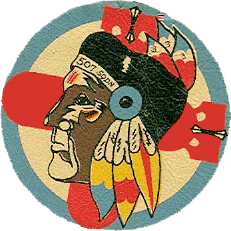
The 507th Bombardment Squadron was a unit of the United States Army Air Forces. Its last was assigned to the 333d Bombardment Group, stationed at Kadena Air Base, Okinawa. It was inactivated on 28 May 1946.

The 68th Air Refueling Squadron is an inactive United States Air Force unit. It was last assigned to the 305th Bombardment Wing at Bunker Hill Air Force Base, Indiana, where it was inactivated on 25 March 1965.

The 362d Tactical Electronic Warfare Squadron is an inactive United States Air Force unit. It was last assigned to the 6498th Air Base Wing at Da Nang Air Base, Republic of Vietnam. It was inactivated on 28 February 1973.

The 920th Air Refueling Squadron is an inactive United States Air Force unit. It was last assigned to the 379th Bombardment Wing at Wurtsmith Air Force Base, Michigan where it was inactivated on 30 September 1992.

The 41st Air Refueling Squadron is an inactive United States Air Force unit. It was last assigned to the 380th Operations Group at Griffiss Air Force Base, New York, where it was inactivated on 15 February 1993.
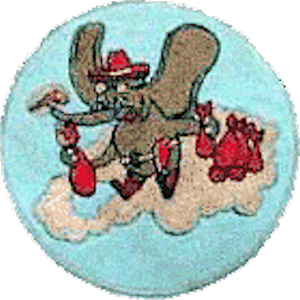
The 461st Bombardment Squadron is an inactive United States Air Force unit. Its last assignment was with 346th Bombardment Group at Kadena Airfield, Okinawa, where it was inactivated on 30 June 1946. From 1942 the squadron served as a replacement training unit for heavy bomber aircrews. It was inactivated in the spring of 1944 in a general reorganization of Army Air Forces training units. The squadron was activated again in 1944 as a Boeing B-29 Superfortress unit. Although it deployed to the Pacific, it arrived too late to see combat service.
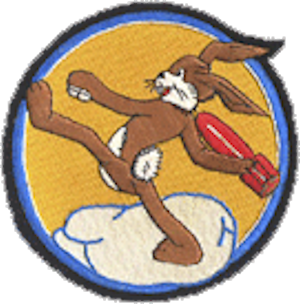
The 463d Bombardment Squadron is an inactive United States Air Force unit. Its last assignment was with 346th Bombardment Group at Kadena Airfield, Okinawa, where it was inactivated on 30 June 1946. From 1942 the squadron served as a replacement training unit for heavy bomber aircrews. It was inactivated in the spring of 1944 in a general reorganization of Army Air Forces training units. The squadron was activated again in 1944 as a Boeing B-29 Superfortress unit. Although it deployed to the Pacific, it arrived too late to see combat service.

